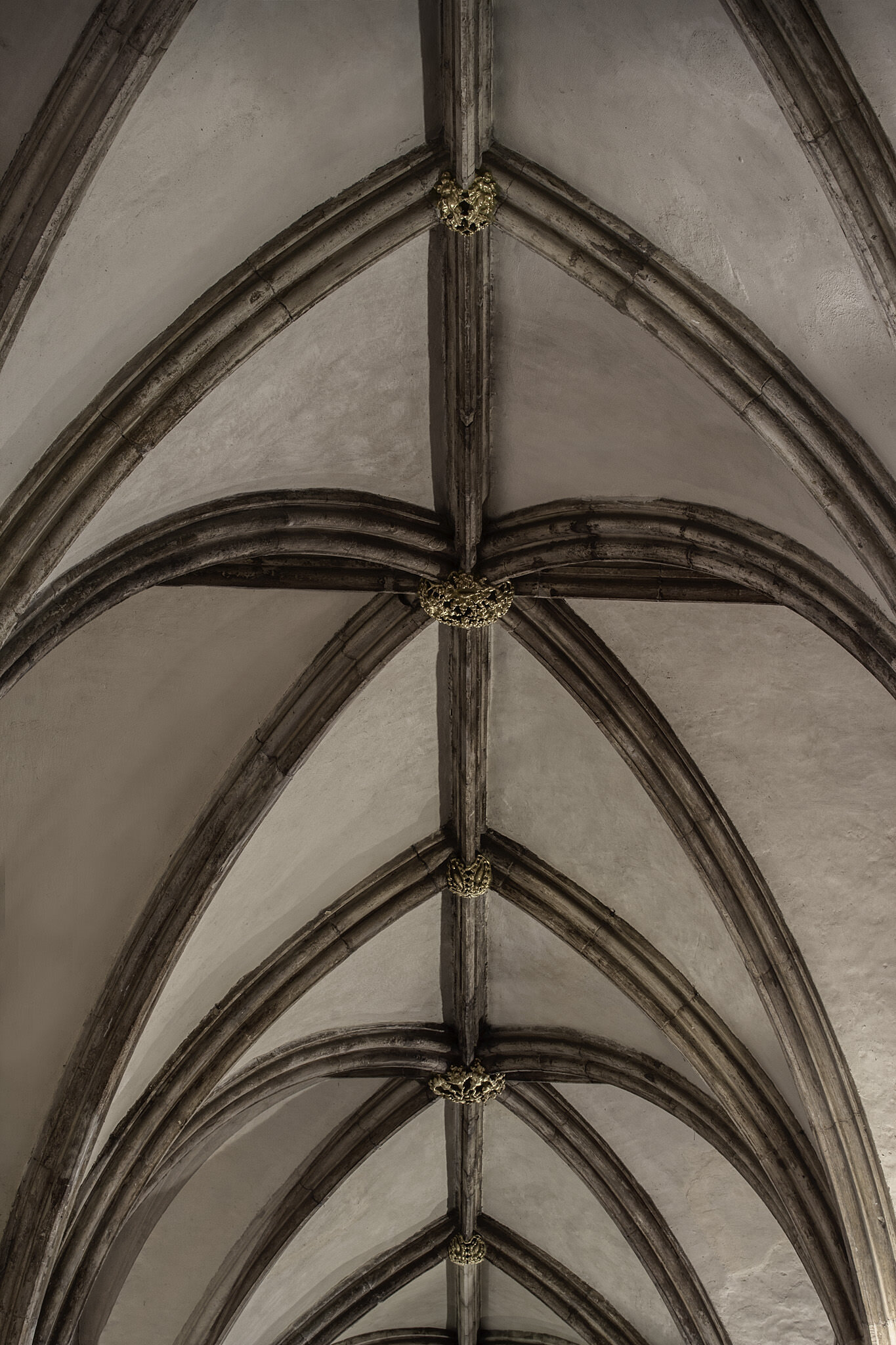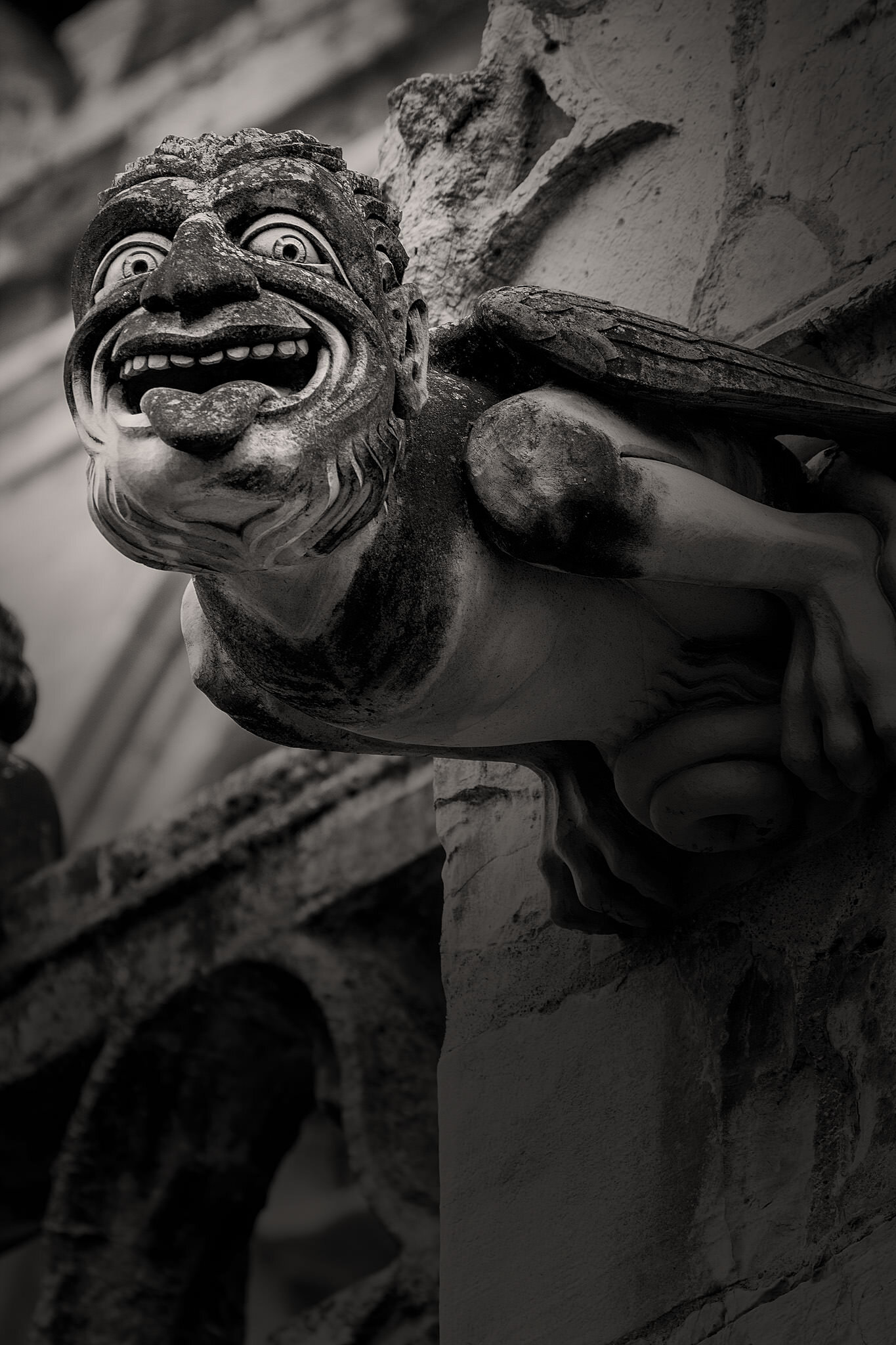Selby Abbey, Yorkshire, England

Many medieval monasteries were built in isolated locations and this is true for Selby Abbey also. It was built on what, at the time, was a soggy plain in an unlived in area. Although the ground is fertile today, 900 years ago it was swamps and marshlands. Selby is less than twenty feet above sea-level, inadequate drainage is, was, and is still, a problem for Selby.
After William the Conqueror took control of southern England, and during the time of his devastation of the North of England for their risings against him in the Harrying of the North of 1069, his wife Queen Matilda is said to have come to Selby, where she gave birth to her last son, later to be known as Henry I.
The story goes that around 1170, a monk named Benedict travelled from Auxerre with the dried finger of St. Germain (as one does) to Selby, to found an Abbey, using the relic to draw in pilgrims. Benedict may have been quite intelligent and opportunistic, or perhaps he just got lucky, but a year later William the Conqueror gave him a charter that granted him lands, on which to build an Abbey at Selby, together with other lands from which he could take timber for the construction of his wooden church. Another possibility is that William I founded the Abbey as an act of expiation for his sins. If it is true that his son Henry was born at Selby, then he may have had a second reason to commemorate the place.
The Archbishop of York ordained Benedict as the first Abbot of Selby. The new monastery would be built to follow the Benedictine Rule and the monastery should, if possible, ‘be so arranged that all necessary things, such as water, mill, garden and various crafts are situated within the enclosure, so that the monks are not compelled to wander outside, for that is not at all expedient for their souls.’
While Benedict was the Abbot of Selby, two of the monk stole valuables from the Abbey’s treasury and left the Abbey. They were caught and the Abbot ordered them to be castrated, a punishment thought to be cruel, even in the 11th Century. Benedict was accused of cruelty and when William II heard of it, he asked the Abbot of St. Mary’s in York to arrest him. Benedict had lost the respect of his congregation and was forced to resign.
The second Abbot at Selby was Abbot Hugh, who succeeded Benedict in 1097 and decided to replace the wooden church with a stone church. The Abbot worked alongside the labourers and insisted on receiving a similar wage, which he gave to the poor.
In order to get the stone transported the 8 mile journey from the quarry at Fryston, a waterway was constructed for its transportation. It took 130 years to complete the new church and over this time building styles changed, so we have Norman arches on the lower level of the nave, with English Gothic arches above.
King John conceded in 1214 to allow free elections, ‘The elections of all prelates whatsoever be free forever.' This meant that no longer would monastic establishments have to wait months or years for a new Abbot, Bishop, or Pope to be elected, this gave the church much more control over its own affairs. The monks at Selby were now free to elect a new Abbot from there own ranks, rather than have an outsider thrust upon them.
Abbot Benedict was not the only Abbot to tarnish Selby’s reputation. In the mid-13th Century, Thomas de Whalley was appointed Abbot and within a few years he was being investigated for misconduct. He was accused of mismanaging the Abbey’s funds, loose living and immorality. Physical fights broke out amongst the monks and de Whalley was banished to do penance at Durham.
Selby’s records tell us that the majority of the monks were being recruited from local villages within a 25 mile radius. It is thought that the majority of monks were recruited from the middle class of society, rather than the lower or upper ranks. For example, the father of Thomas de Whalley, Abbot of Selby in the late 13th Century, was a Selby carpenter.
The tombs of Hugh de Pickworth and his wife Margaret are located in the nave of Selby Abbey. De Pickworth fought for Edward II in Scotland in the early 14th Century and later served in parliament. The tombs would have originally been next to each other.
Margaret de Pickworth married her husband Hugh after her first husband died. Her effigy would probably, originally, have had a pet dog at her feet, as her husbands effigy does, but the stone has what appear to be chisel marks at the bottom of her dress from when the animal was removed long ago.
At 6pm, on the 30th of March 1690, the upper part of the tower collapsed, due in part to neglect and in part to the shifting foundations. The south transept and part of the choir were severely damaged by the falling masonry.
On the night of the 19th of October 1906, there was a fire in the Abbey church at Selby. Smoke poured out of the roof which was burning, with only charred timbers which lay open to the sky remaining in the morning. The church had been devastated, however, a restoration fund was soon set up and work began to restore the building. We are lucky to still have it today as this church has survived more than most. It has burned, flooded, it's foundations have sunk, the tower has fallen, not to mention the human vandalism done by Henry VIII during the dissolution, and further vandalism by the armies of Charles I and Oliver Cromwell.












